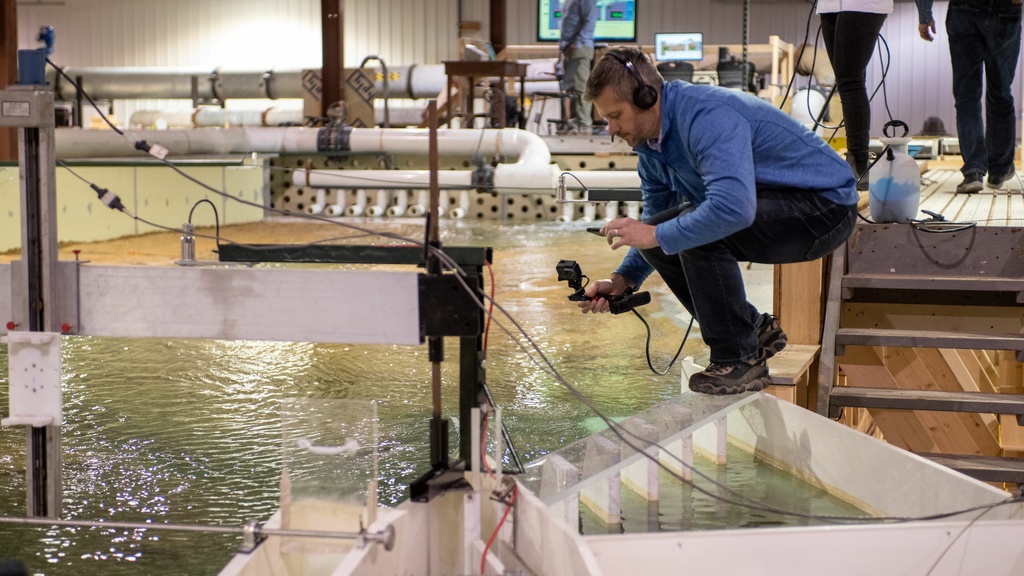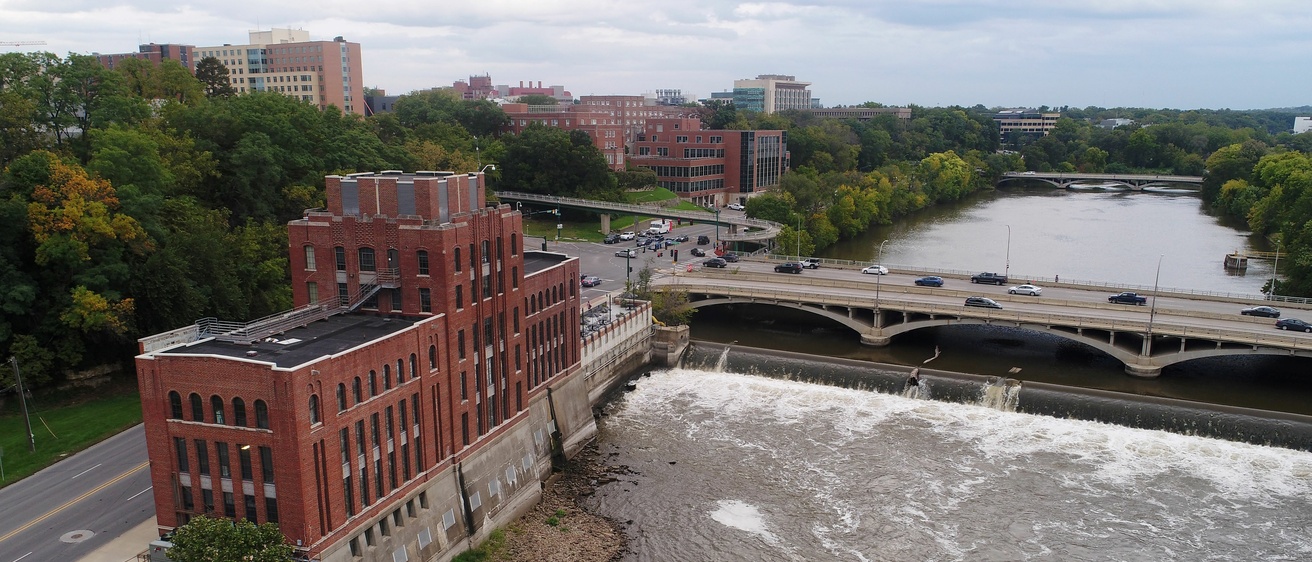IIHR’s extensive state-of-the-art facilities and instrumentation at the University of Iowa support research and education in the hydrosciences, including a wide range of physical and numerical modeling and field data collection projects.
Wave Basin & Towing Tank
Since 1948, IIHR has been a leading player in enhancing U.S. naval ship performance through front-line research in hydrodynamics. IIHR’s unique combination of resources, facilities, and top researchers has made the University of Iowa a worldwide leader in naval ship hydrodynamics.
- State-of-the-art wave basin
- Towing tank
- CFDShip-Iowa and other computational coding capabilities
Flumes & Wind Tunnels
Flume design and construction is a historic strength at IIHR. We have designed and constructed a variety of wind tunnels and flumes in-house, including:
- Wind-wave tunnel
- Closed-loop recirculating wind tunnel
- Tilting flume
- Low-gradient sediment flume with integrated wind tunnel
- Fixed-gradient flume with low turbulence characteristics
- Environmental flow facility

Electrical & Mechanical Shops
IIHR maintains facilities and professional engineering staff to design and construct precision models, equipment, and systems for a broad range of research. Customized instruments are available to measure a variety of fluid-flow parameters.
- Laboratory models
- Instrumentation
- Experiments
- 3-D computational grids
Watersheds & Rivers
IIHR’s river-related research includes the Iowa Flood Center, making Iowa more flood resilient; the Iowa Watershed Approach, slowing runoff that would otherwise cause floods; and water quality research. Resources include:
- Hydrologic sensor networks collecting data to be shared online
- Research vessels with sophisticated instrumentation
- Sediment sampling and coring
- Single- and multi-beam bathymetry

Laboratory & Large-Scale Models
Over the decades, IIHR has perfected physical modeling for applied hydraulic research. The institute’s warehouse-sized laboratories support construction of large-scale models.
- The James Street Laboratory provides 17,000 square feet for the construction of large hydraulic models.
- IIHR designed and constructed physical hydraulic models for clients including London, New York City, Washington, D.C., Abu Dhabi, and major hydroelectric public utilities.
Research Computing
IIHR’s Research Computing Support (RCS) strives to provide an efficient, effective computational platform for research. These resources include:
- High-performance computing
- Support for physical and computational modeling
- Large-scale flood data harvesting and processing systems
- Design and drafting software and expertise
- A carefully selected set of software packages
Research Facilities
IIHR maintains 10 facilities, several of which support the lab’s extensive physical modeling activities. Click the button for a map and list of these facilities, with links to information about each.
